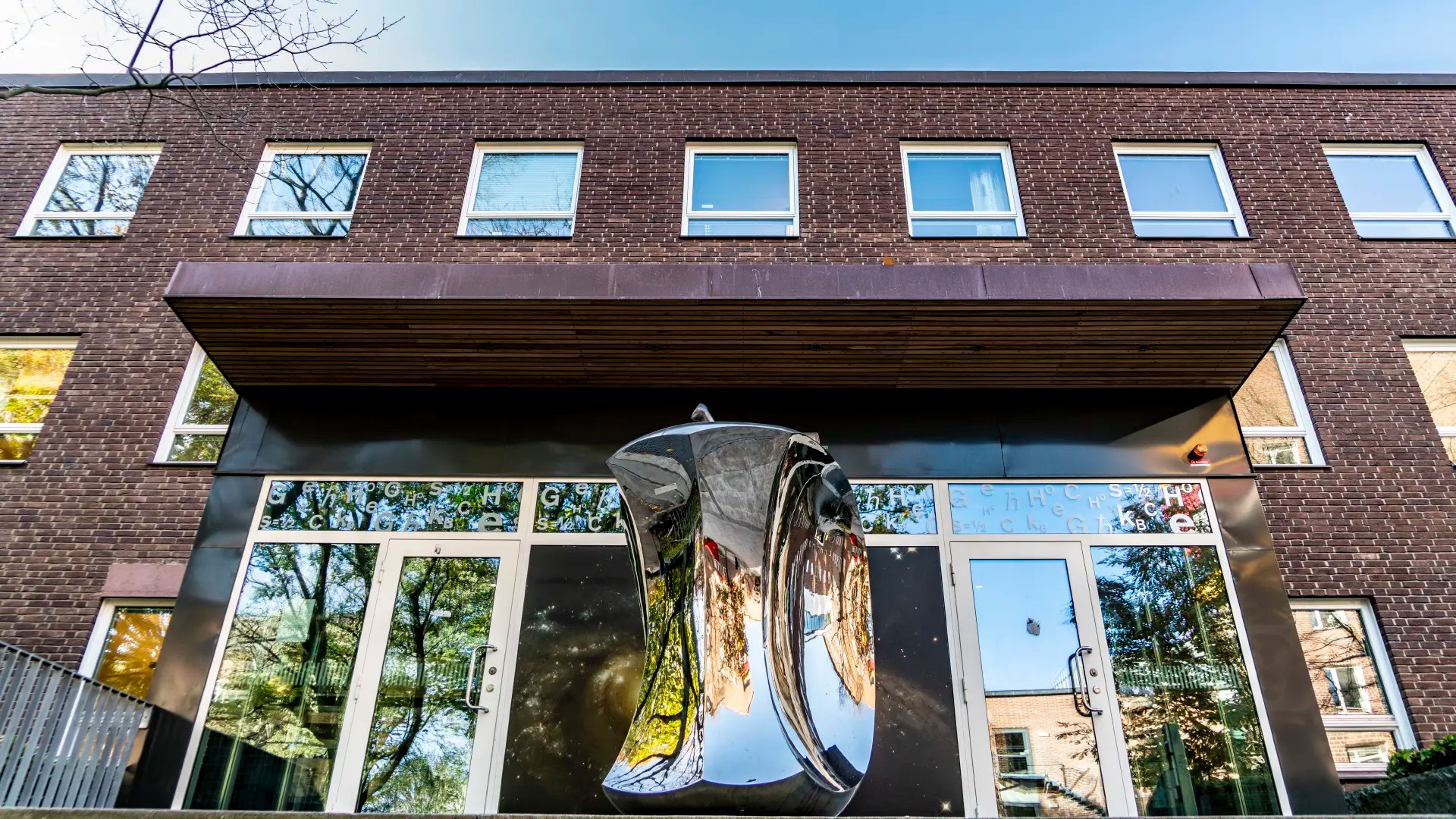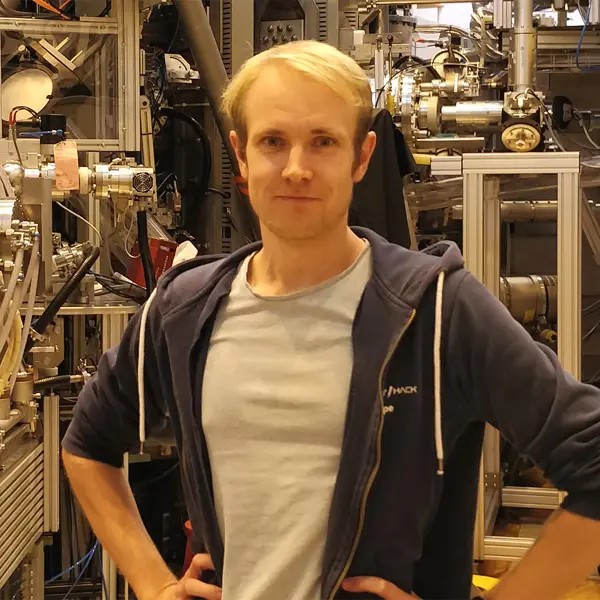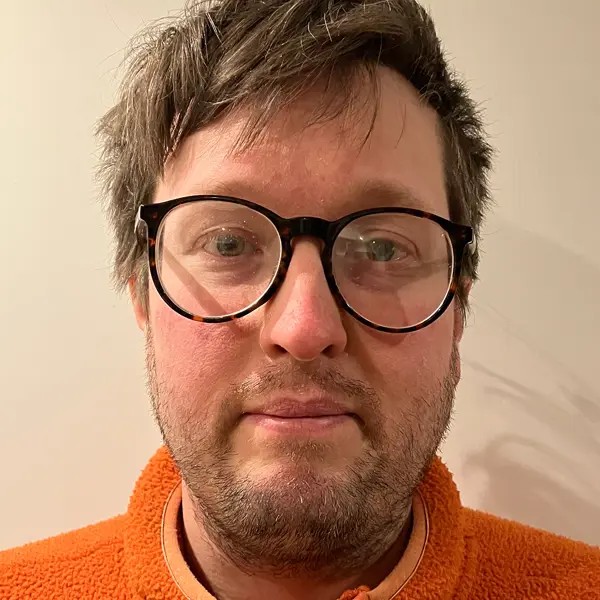
Mathias Hoppe and Christopher Linderälv are winners of the Department of Physics' annual prize for the best doctoral thesis. The focus of their theses is the obstacles that stand in the way of large-scale fusion energy, respectively how materials can be modified for, for example, applications in quantum technology.
The Department of Physics' Best Thesis Award for the academic year 2022 goes to Dr. Mathias Hoppe, for his thesis entitled "Runaway-electron model development and validation in tokamaks" (supervisor Tünde Fülöp), and to Christopher Linderälv, for his thesis entitled "Optical properties of point defects in insulators and of transition metal dichalcogenides” (supervisor Paul Erhart).
The award committee's motivation for the awards is:
“The award committee decided to award this year’s Best PhD Award to two laureates: Dr. Mathias Hoppe and Dr. Christopher Linderälv. Their PhD theses report excellent scientific work in a way that makes science understandable to an audience outside their own research communities.
Dr. Hoppe is awarded for his solid scientific contributions to magnetic confinement fusion and for the pedagogical qualities of his thesis; the committee appreciated how Dr. Hoppe puts his work into the context of his field and introduces the reader to the world of thermonuclear devices in a thesis that is easy to read.
Dr. Linderälv wrote an excellent thesis documenting his prolific work applying first-principle calculations to understand materials properties, yet close to experiments; the committee enjoyed reading his thesis with its impressive visual quality.”
Below, the winners tell us more about the research in their theses, the writing process, and what they are doing now!

Three questions for ... Mathias Hoppe, about his winning doctoral thesis.
What are you investigating in your thesis?
"My thesis revolves around one of the major remaining obstacles that stand in the way of large-scale fusion energy: so-called runaway electrons. These electrons can, among other things, occur if the fusion fuel suddenly cools down sharply and the fusion reactions slow down. The runaway electrons are often difficult to control and if they happen to hit the wall of the fusion reactor, they risk causing major damage to the machine. My contribution to the research has primarily been to develop mathematical models and simulation codes that make it possible to partly predict how the runaway electrons arise, and partly to compare experimental measurements with simulations. The fusion reactors of the future will both have to be much larger than today's fusion experiments and use technologies that have not been tested in reality yet, and since the risks connected to runaway electrons are exponentially much worse in large fusion machines, there is basically no margin to try them out in the machines of the future. Therefore, it is extremely important to have access to well-founded and experimentally validated mathematical models that can be used to test various safety systems in advance, before the machines are built. That is exactly what my research aimed at."
What was easy and what was difficult during the process of writing the thesis?
"One of the most difficult parts of the thesis has concerned the connection between theory and experiment, namely how sufficiently simple models that simultaneously describe reality can be well formulated. Fusion and plasma physics is a very practical science where the goal is to produce as much energy as possible, and then experiments often lead to advanced technical solutions that can be extremely difficult to describe mathematically. In order to be able to reason theoretically about how the experiments can be improved, it is therefore required that just the right simplifications of the mathematics are made so that the effects of the most relevant physics show up most clearly. Fortunately, there are many very smart people working on fusion, and most are more than happy to share their ideas and experiences. So even though the questions I was faced with were often very clever, there were other researchers around, both in Sweden and the rest of the world, who were open to discussion and made it possible for me to piece by piece put together the puzzle that eventually became my thesis."
What are you doing now?
"My first stop after the defense was as a postdoc at one of Europe's largest fusion laboratories, namely the Swiss Plasma Center at the École Polytechnique Fédérale de Lausanne in Switzerland. Here I am able to apply the knowledge I have gathered during my doctoral studies and the tools I have developed to study the lab's own fusion experiments in detail. Mainly, I work with interpreting experimental results using computer simulations, and try to be as good a discussion partner as possible to other researchers who also work with runaway electrons. From April 1, however, I will return to Sweden, but this time to Stockholm and KTH in the role of Assistant Professor in fusion plasma physics. My research will likely continue on roughly the same track as before, but now I also get the chance to take greater responsibility for students in the role of teacher and supervisor. Because if there is something that really brightened my time as a doctoral student, it has been the interaction with all the fantastic bachelor's and master's students that I had the privilege of supervising!"
Read Mathias Hoppe's thesis: Runaway-electron model development and validation in tokamaks

Three questions for ... Christopher Linderälv, about his winning doctoral thesis.
What are you investigating in your thesis?
"My thesis is about material physics on an atomic scale, where I have carried out theoretical studies on electrons, atoms and their interaction. I have studied a variety of materials but what has been a common denominator is how to modify these materials to obtain desired properties. One of the main tracks in my research has been how defects, i.e. irregularities in a crystal, affect the optical properties of different materials. Some defects have applications in, among other things, quantum technology. While some defects are well researched, the vast majority are not and here I think my research has been able to clear up some question marks."
What was easy and what was difficult during the process of writing the thesis?
"The most difficult thing for me in writing the thesis was to put together a coherent story from so many years of research. It wasn't until the last few years that I started to see how it all came together. I put a lot of effort into the introduction to clarify the question and to explain how the parts of the thesis hold together."
What are you doing now?
"I am now at the University of Oslo, where I am researching similar things as during my doctoral studies at Chalmers, but with slightly different approaches and methods."
Read Christopher Linderälv's thesis: Optical properties of point defects in insulators and of transition metal dichalcogenides
About the Best Thesis Award
- The Best Thesis Award was founded in 2013, as one among several initiatives at the Department of Physics, to maintain and improve the research quality, as well as to show appreciation for the PhD students' hard work. The management of the department also hopes that this award can help doctoral students receive an extra boost in their careers after the defence. These particular theses can serve as good examples for doctoral students in the early stages of their own thesis writing. Besides the honour, the award consists of a diploma and a monetary prize of SEK 10.000.
- Members of the Best PhD Thesis Award Committee: Dinko Chakarov, Hana Jungová, Philippe Tassin (chair), Paolo Vinai and Julia Wiktor.